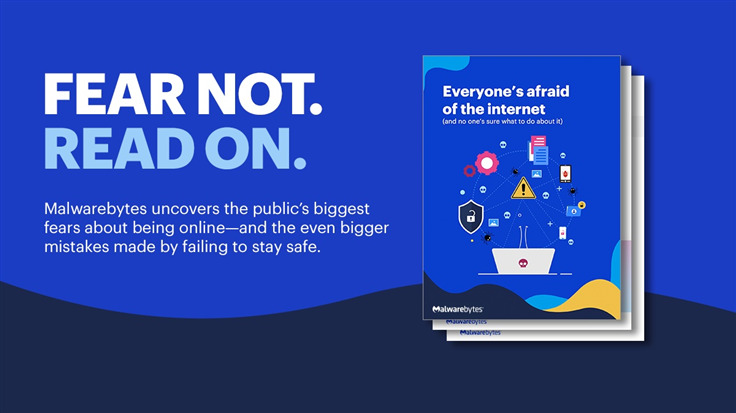The “version history” of the internet was split by what we could do online—simple browsing across Web 1.0’s static web pages, instant connection throughout Web 2.0’s social platforms, and, into the future, potential new forms of ownership within Web 3.0’s dreams of decentralization.
But, as Malwarebytes has uncovered in new research, what we can do online produces its own, generational byproduct: Fear.
Gen Z, unlike any other age group, is most afraid of a vindictive internet that obtains their private photos and videos—and any personal details about sexual activity and mental health—and exposes it online for all to see. More than half worry that such exposure could hurt their relationships with family and friends (54%), and more than a third fear that it could lead to being bullied (36%) and physically harmed (34%).
These are some of the findings from Malwarebytes’ new research survey, “Everyone’s afraid of the internet and no one’s sure what to do about it.”
By polling 1,000 internet users aged 13 – 77 in North America, Malwarebytes can now reveal, across all age groups and not just for Gen Z:
- The 10 biggest concerns of going online, including hacked financial accounts, identity theft, and malware.
- The 10 most common behaviors that can expose sensitive information to malicious actors, including sharing birthdays online, posting about children on social media, and participating in online giveaways that require personal details.
- The worrying percentage of people who monitor their romantic partner online without consent.
- The broad failure to use the most effective cybersecurity protections available, including antivirus, multi-factor authentication (MFA), and a password manager.
- The eye-popping number of people who reuse passwords.
- The most-feared and least-protected online threat (81% worry about it, only 13% do anything to stop it).
- How many Gen Zers have used a generative AI tool, like ChatGPT, to cheat on a school assignment.
- The uphill battle that cybersecurity companies face because of the number of people who think there’s “no point” in using cybersecurity products.
The internet is a constantly evolving space, and with new users—including many who are younger than the internet itself—the concerns, behaviors, and precautions around it will change. “Everyone’s afraid of the internet and no one’s sure what to do about it” provides an in-depth exploration into how people of all age groups approach their time online.
At first glance, the findings may look dour. The number of people who repeat passwords is too high. The number of people who use antivirus is too low.
And yet, within the data, there is opportunity.
Consider this: 41% of people said they “don’t fully understand how different cybersecurity products can protect me,” and 37% said “cybersecurity products only really help with things like viruses and malware.”
The next step, as usual, is education. Cybersecurity tools today provide far more protection against modern threats like malvertising and phishing, while related tools in online privacy can prevent online tracking.
We have the answers to safety. We can get there together.










